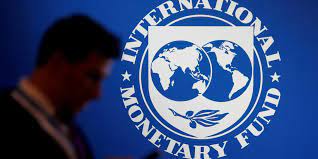F.P. Report
Washington, DC: On November 28, The Executive Board of the International Monetary Fund (IMF) concluded the Article IV consultation [1] with India.
The economy has rebounded from the deep pandemic-related downturn. Real GDP grew by 8.7 percent in FY2021/22, bringing total output above pre-pandemic levels. Growth has continued this fiscal year, supported by a recovery in the labor market and increasing credit to the private sector. New COVID cases have fallen to low levels, supported by high vaccination rates. The free administration of booster shots and broader booster eligibility criteria should help improve vaccine coverage.
Policies are addressing new economic headwinds. These include inflation pressures, tighter global financial conditions, the fallout from the war in Ukraine and associated sanctions on Russia, and significantly slower growth in China and advanced economies. The authorities have responded with fiscal policy measures to support vulnerable groups and to mitigate the impact of high commodity prices on inflation. Monetary policy accommodation has been gradually withdrawn and the main policy rate has been increased by 190 basis points so far in 2022.
Growth is expected to moderate reflecting the less favorable outlook and tighter financial conditions. Real GDP is projected to grow at 6.8 percent and 6.1 percent in FY2022/23 and FY2023/24 respectively. Reflecting broad-based price pressures, inflation is projected at 6.9 percent in FY2022/2023 and is expected to moderate only gradually over the next year. The current account deficit is expected to increase to 3.5 percent of GDP in FY2022/23 as a result of both higher commodity prices and strengthening import demand.
Uncertainty around the outlook is high, with risks tilted to the downside. A sharp global growth slowdown in the near term would affect India through trade and financial channels. Intensifying spillovers from the war in Ukraine can cause disruptions in the global food and energy markets, with significant impact on India. Over the medium term, reduced international cooperation can further disrupt trade and increase financial markets volatility. Domestically, rising inflation can further dampen domestic demand and impact vulnerable groups. On the upside, however, successful implementation of wide-ranging reforms or greater than expected dividends from the remarkable advances in digitalization could increase India’s medium-term growth potential.
Executive Board Assessment [2]
Executive Directors concurred that the authorities have appropriately responded to post-pandemic economic shocks with fiscal policy measures to support vulnerable groups and with front-loaded monetary policy tightening to address elevated inflation. They generally noted that while public debt sustainability risks have increased, these risks are mitigated given the debt characteristics. Directors encouraged a more ambitious and well-communicated medium-term fiscal consolidation, anchored on stronger revenue mobilization and further improvement in expenditure efficiency, while high-quality spending on infrastructure, education and health is protected. They also observed that further improvements in public financial management, fiscal institutions and transparency would support consolidation efforts.
Directors noted that additional monetary policy tightening should be carefully calibrated and clearly communicated to balance inflationary objectives and impact on economic activity. Noting that India’s external position was broadly in equilibrium, Directors observed that the exchange rate should continue to act as a shock absorber with foreign exchange intervention limited to addressing disorderly market conditions. Directors welcomed the authorities’ plans to introduce a central bank digital currency.
While noting the improvement in corporate and financial sector balance sheets, Directors encouraged additional measures to counter risks stemming from tightening financial conditions. They observed that banks should be encouraged to build additional capital buffers and recognize problem loans and noted that targeted prudential tools could strengthen the banking system’s resilience to rising interest rate risks. Directors encouraged the authorities to make further progress on financial sector reforms.
Directors commended the authorities for the remarkable achievements in digitalization. Digital public infrastructure has enabled the rapid deployment of support during the pandemic, and digital advances have facilitated efficient payments and increased financial inclusion. Narrowing the digital divide through improved access and literacy would further support productivity gains.
Directors encouraged the authorities to make additional progress on the structural reform agenda. Increasing female labor force participation, reducing youth unemployment and reducing informality remain critical to sustaining strong and inclusive growth. Strengthening governance and the regulatory framework would foster transparency and safeguard public accountability. Directors welcomed new trade agreements and observed that additional tariff reduction could help deepen India’s integration in global value chains and support growth.
Directors noted India’s important progress in implementing its climate agenda, including through increasing the share of renewables in energy production and improving energy efficiency. Directors observed that additional efforts would be needed to meet the authorities’ net zero objective.
|
India: Selected Economic and Financial Indicators, 2018/19-2023/24 1/
|
|||||||||||||||||||||||||||||||||||||||||||||||||||||||||||||||||||||||||||||||||||||||||||||||||||||||||||||||||||||||||||||||||||||||||||||||||||||||||||||||||||||||||||||||||||||||||||||||||||||||||||||||||||||||||||||||||||||||||||||||||||||||||||||||||||||||||||||||||||||||||||||||||||||||||||||||||||||||||||||||||||||||||
[1] Under Article IV of the IMF’s Articles of Agreement, the IMF holds bilateral discussions with members, usually every year. A staff team visits the country, collects economic and financial information, and discusses with officials the country’s economic developments and policies. On return to headquarters, the staff prepares a report, which forms the basis for discussion by the Executive Board.







